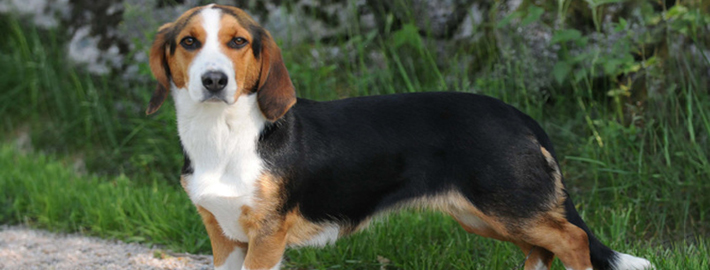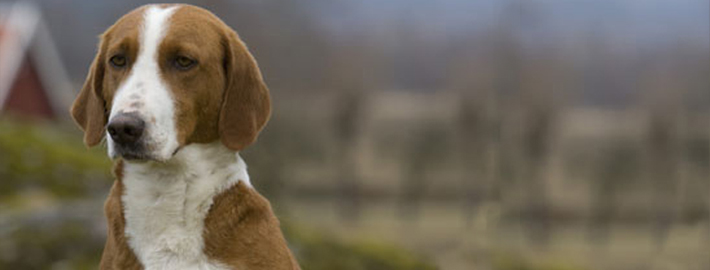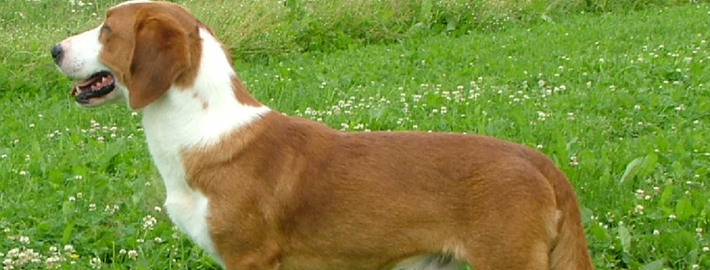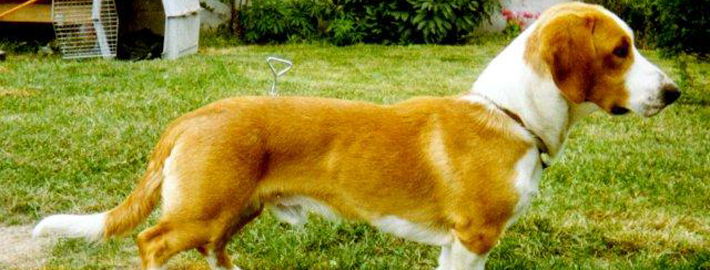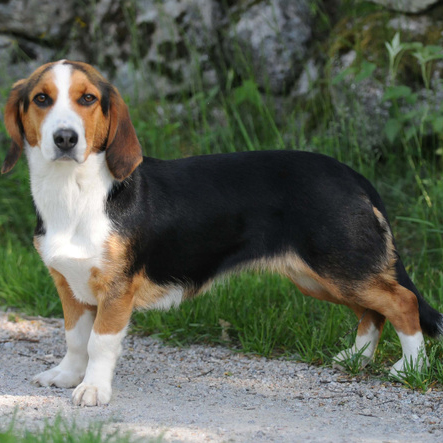What makes the Drever Unique?
Drevers are a type of Swedish hunting dog that use their highly developed sense of smell to flush out game, particularly deer, for their owners. These short-legged dogs are most often found as hunters rather than as family companions but they nonetheless get along quite well with people.
Breed Groups
Page Contents
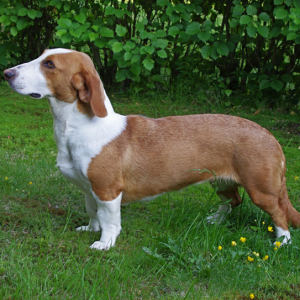
SnapShot
Is the Drever Right For You?
Members of this breed are well known for their pleasant and friendly personalities. These dogs are incredibly affectionate towards their human owners. Most members of this breed will get along great with children, especially the ones that they know. When properly trained and well-socialized, Drevers tend to be very outgoing individuals.
In 5 Words
- Even Tempered
- Alert
- Self-Assured
- Keen
- Playful
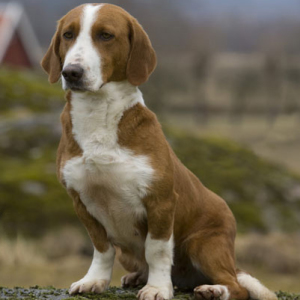
Characteristics
Learn About the Drever
Description
General Description
Members of this breed resemble Beagles in appearance. Like the Beagle, Drevers have short legs, elongated bodies, and similar coloring. However, these two breeds are not the same at all. Drevers should have straight legs rather than ones that are bent. They also have straight backs and broad, tucked up chests. These dogs additionally possess large, proportionate heads that should come to an obvious stop. They have angular muzzles and lengthy necks. Sizable black noses are another breed feature. Drevers have clear, dark brown eyes that are covered by thin eyelids. These dogs likewise have broad but moderately long ears with rounded tips. Their ears should lie close to their heads. Members of this breed possess lengthy tails that hang straight down when they are in motion. FCI regulations state that it is permission for dogs to carry their tails at a higher angle but the appendage in question should never be level with a dog’s back.
Size
Members of this breed typically weigh about 33 pounds (15 kilograms). Female dogs are somewhat smaller than their male contemporaries. The average height for female Drevers is between 11.8 and 15 inches (30 and 38 centimeters). Males stand between 12.5 and 15.5 inches (32 and 40 centimeters) tall.
Coat
Drevers have thick, straight coats that are short in most places. However, the sections of fur found on their backs, thighs, and necks may be longer than that on other parts of their bodies. Members of this breed are permitted to be any color but solid white due to hereditary problems with deafness in such individuals. The breed standard does state that Drevers should have white markings on every side of their bodies and if possible these dogs should also have pure white markings on the tips of their tails, their collar areas, and their feet.
Short History of the Drever
In the early part of the 20th century,Westphalian Dachsbrackes made their way to Sweden where they were crossbred with other types of hounds that were found in the region. It is possible that Dachshunds were among the breeds used in this capacity. The cross breeding that took place allowed the offspring to be better adapted to the local environment. As a result, Drevers are more commonly found in their homeland than they are in any other place in the world. Extensive development of this breed was not undertaken until the 1930s, when the dogs obtained a good reputation as deer hunters and their popularity increased. The Swedish Kennel Club recognized this breed as part of their organization in the late 1940s. By 1953, the dogs had also achieved admission to the Fédération Cynologique Internationale (FCI).
Temperament
Due to their history as a hunting breed, these dogs are quite energetic and are willing to work hard for long periods of time. Drevers also have an excellent sense of smell so that they can track prey easily. This breed is more often kept for hunting purposes than for companionship but these dogs may nonetheless function quite well in the latter capacity.
After all, members of this breed are well known for their pleasant and friendly personalities. These dogs are incredibly affectionate towards their human owners. Most members of this breed will get along great with children, especially the ones that they know. When properly trained and well-socialized, Drevers tend to be very outgoing individuals.
These dogs are not typically aggressive, even when confronted with unfamiliar humans. Correctly taught Drevers are very unlikely to act in a violent manner towards people. As a result, these dogs may make fair watchdog but they are not a good choice for families that want a guardian breed.
Caring for Your Drever
General Health
No particular ailments have been thus far identified as being problematic for this breed and Drever enthusiasts would point out that these dogs are generally quite healthy. However, the absences of any scientific studies on the subject make it hard to state with any certainty that this is indeed the case.
Care
Daily
All dogs need exercise on a regular basis but workout requirements do naturally vary from breed to breed. Drevers in particular are incredibly energetic dogs that can go for hours without stopping. Those that are not being used for hunting purposes will certainly need a daily walk. Some individuals may also benefit from a long jog or a trip to the local park for a play session.
Weekly
It is incredibly important for owners to clean their pet’s teeth a few times per week using a canine toothbrush and toothpaste that has been formulated for dogs that so that the individual in question maintains good oral health.
Monthly
Parasite prevention medications are a must for all dog breeds. Typically, these products are administered once a month to keep fleas, ticks, and other irritants at bay. Be sure to purchase the best brand that you can afford in order to obtain effective results.
Grooming & Bathing
Professional grooming is not necessary for members of this breed. Brushing their coats and wiping the dogs down with a damp rag on a regular basis is all that is needed to keep households containing Drevers from being totally covered in fur. After all, these dogs shed moderate to high amounts of fur, despite their modest size.
Exercise & Training
Due to the fact that they were bred as hunting dogs, Drevers need little instruction to perform tasks related to that particular activity. Members of this breed that receive early socialization and obedience training quickly learn their manners. However, further education of these dogs may prove quite difficult.
With a disposition like the ones found in other scent hounds, it is no surprise that Drevers tend to follow their noses wherever an interesting smell might be. As a result, owners will want to keep their dogs on the leash in city environments or in situations where there is a potential for disaster if their pet takes off running.

